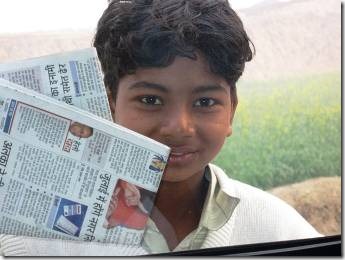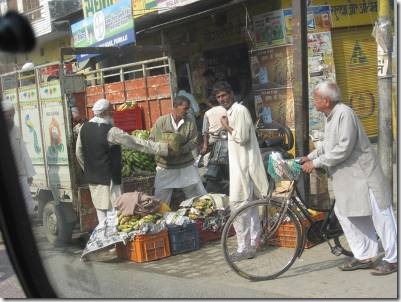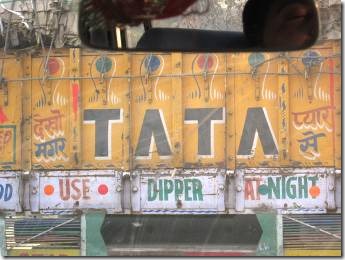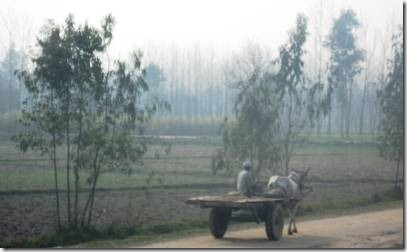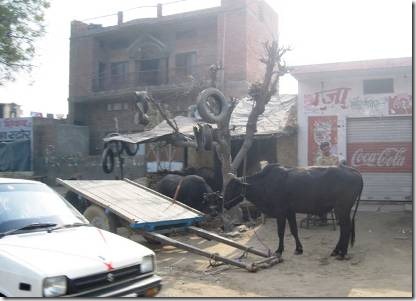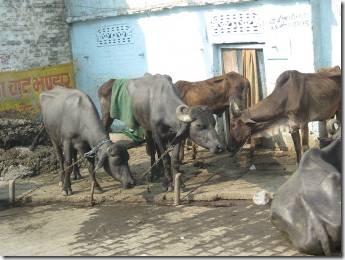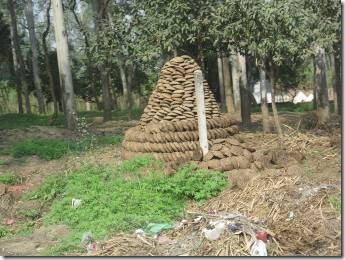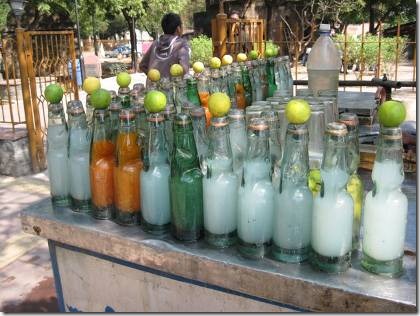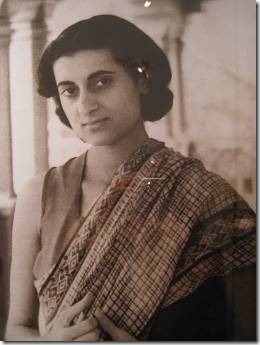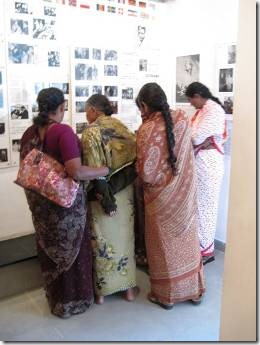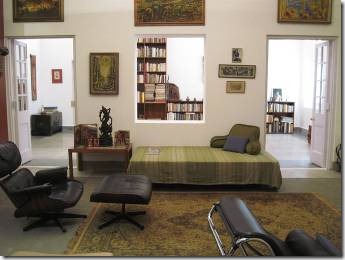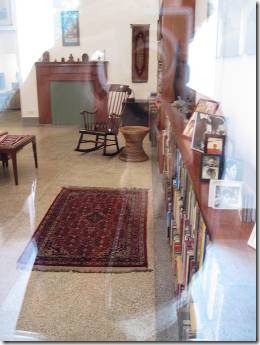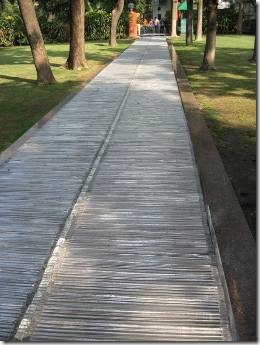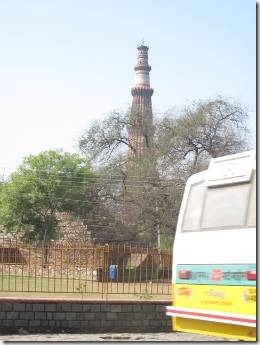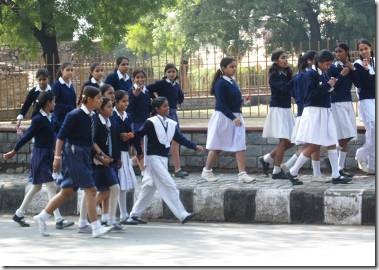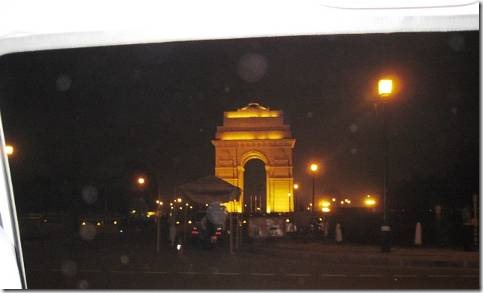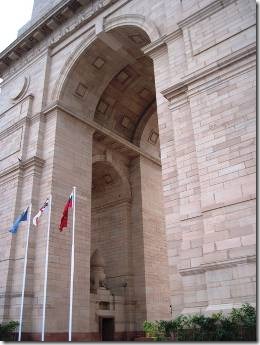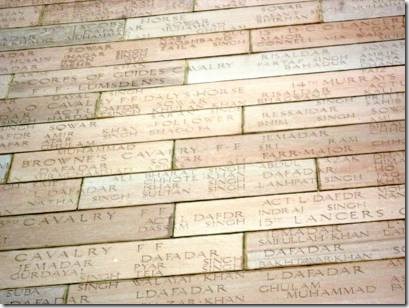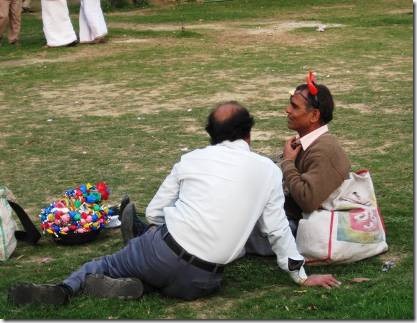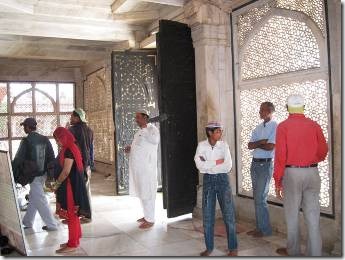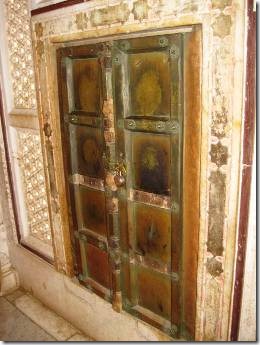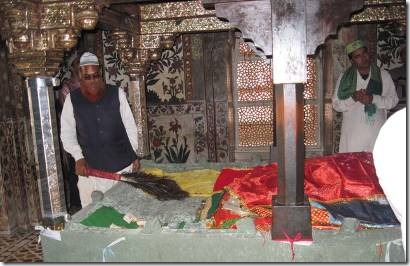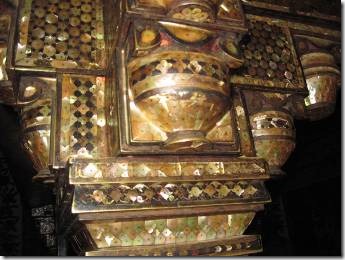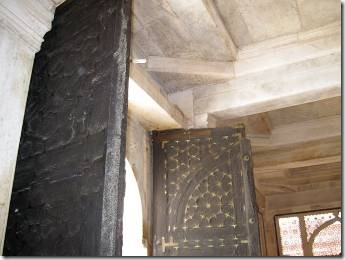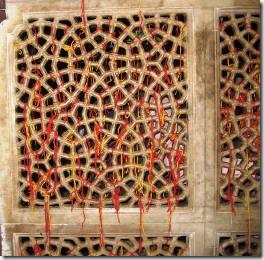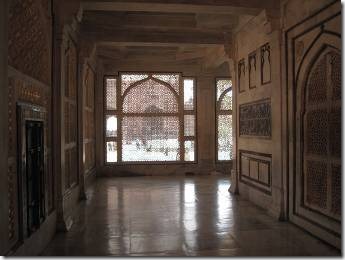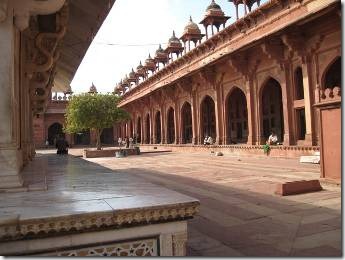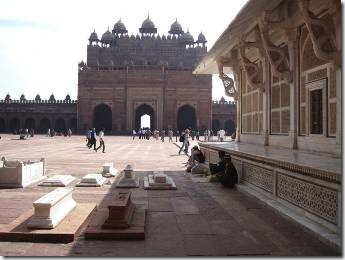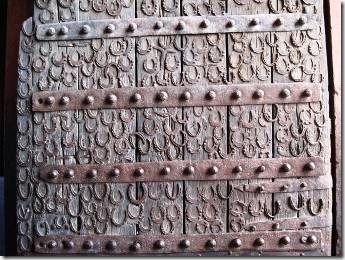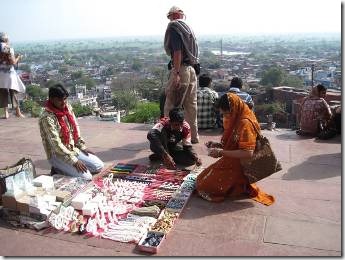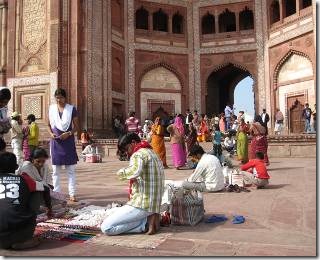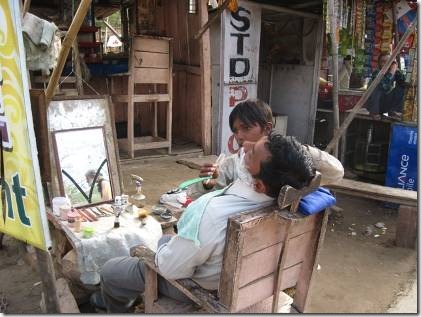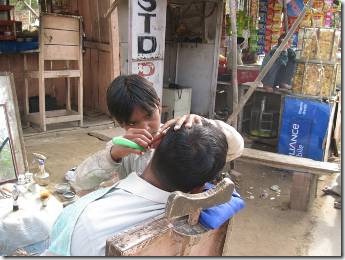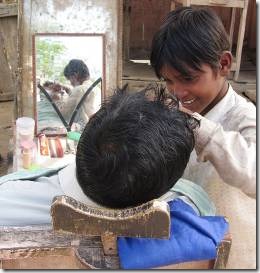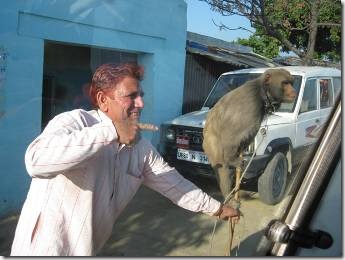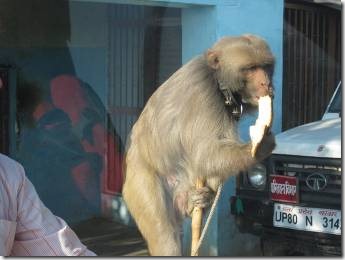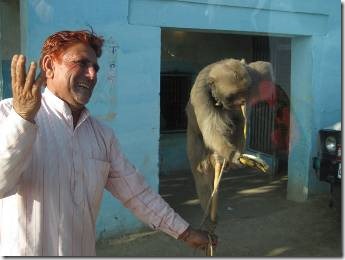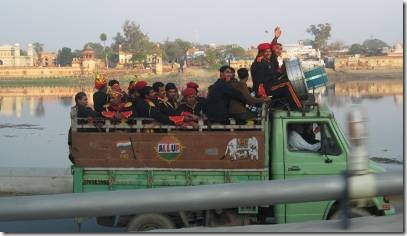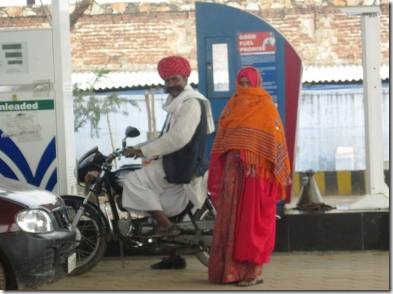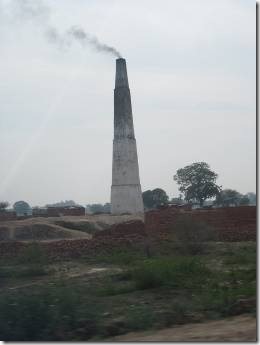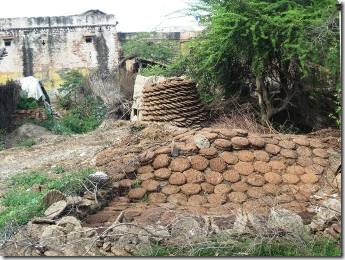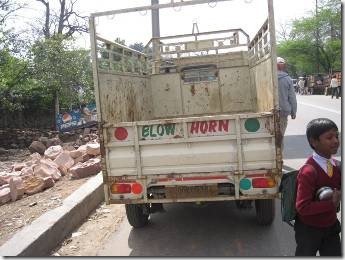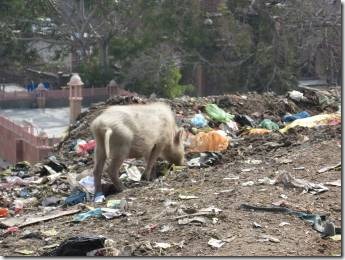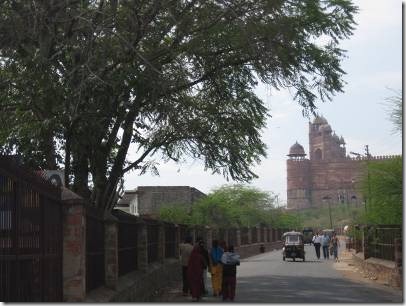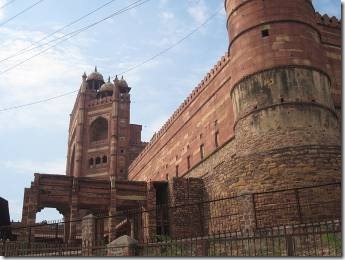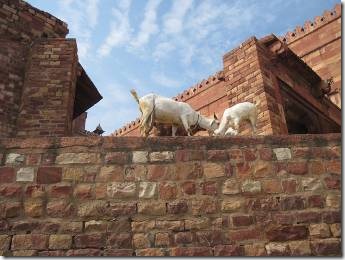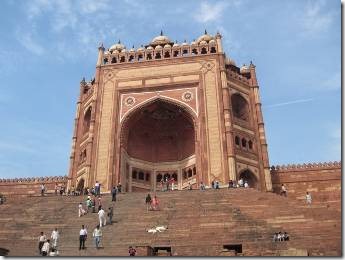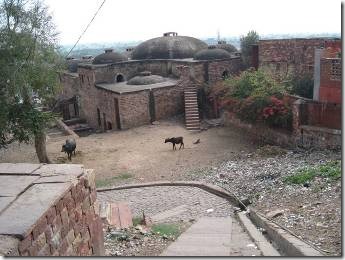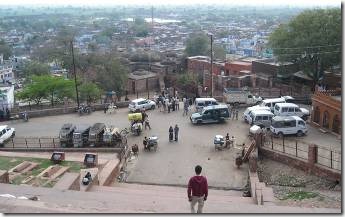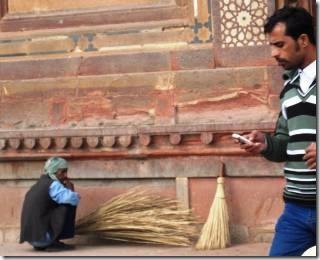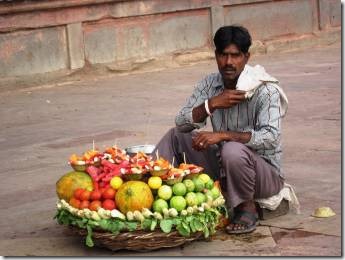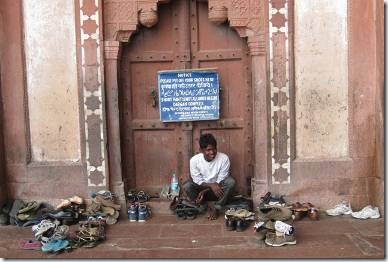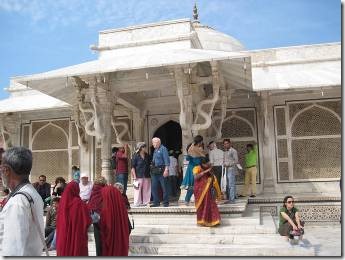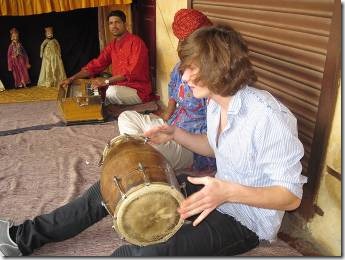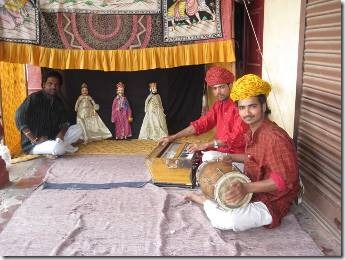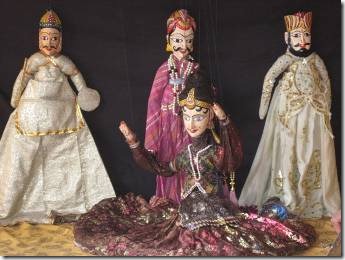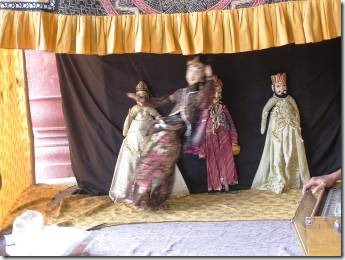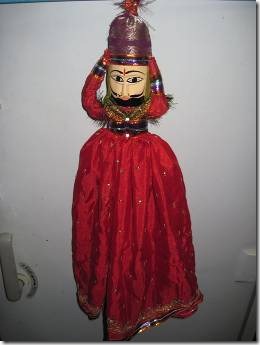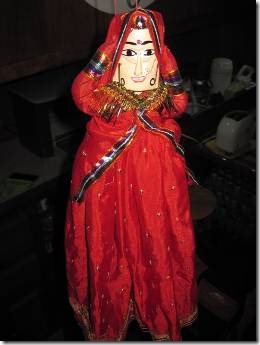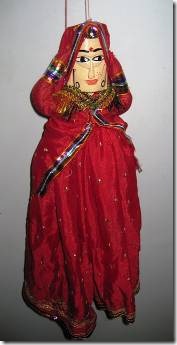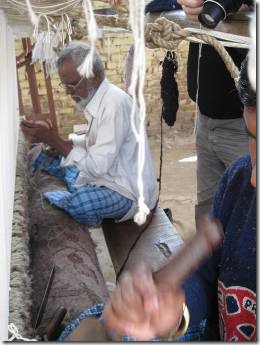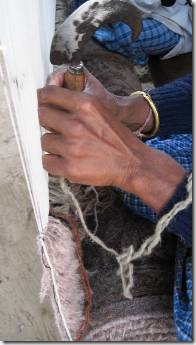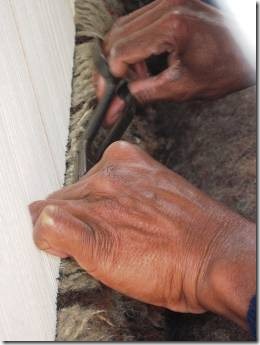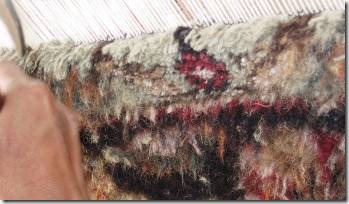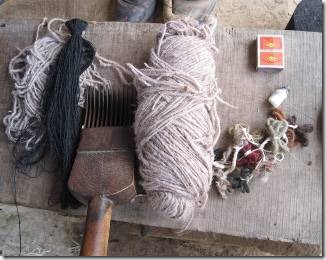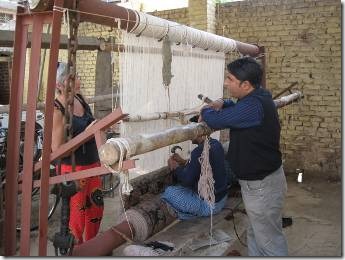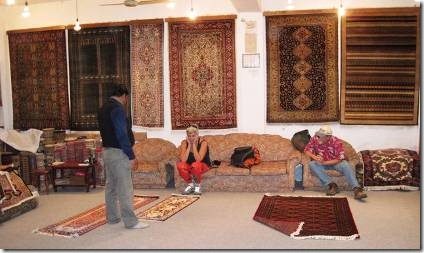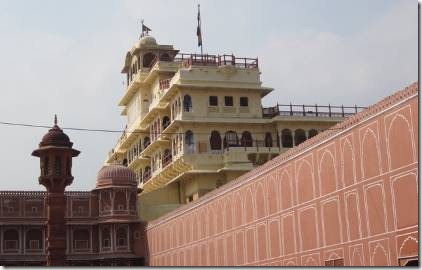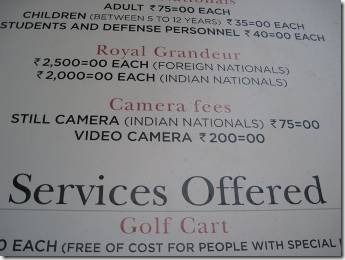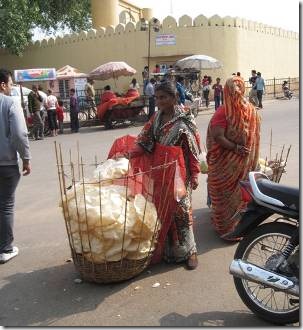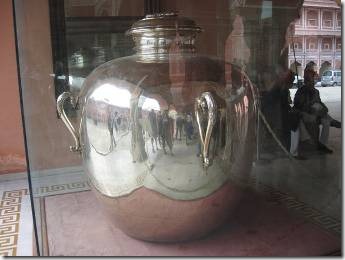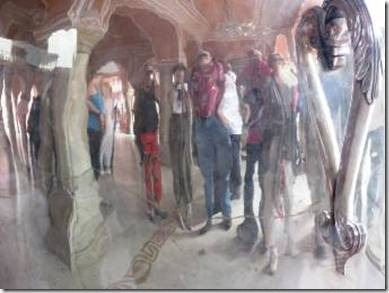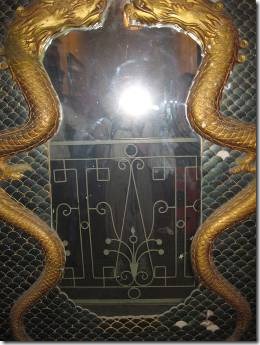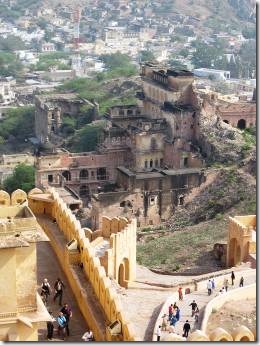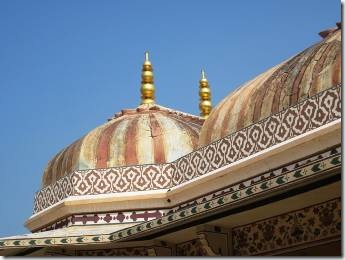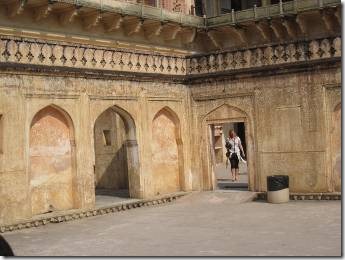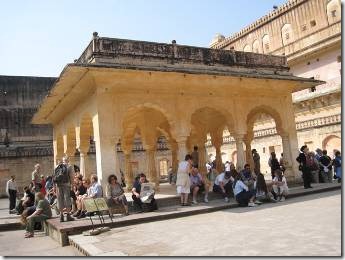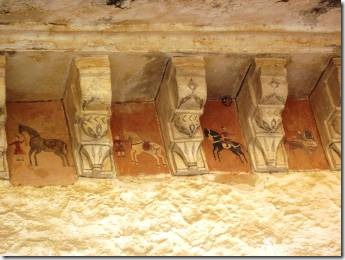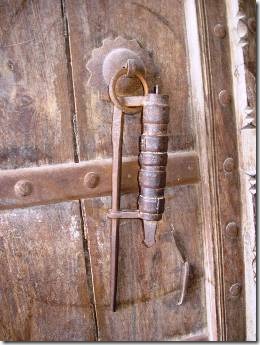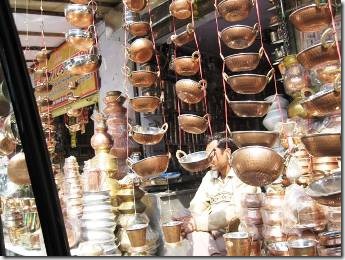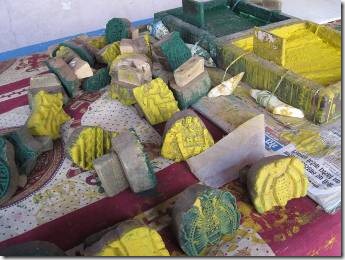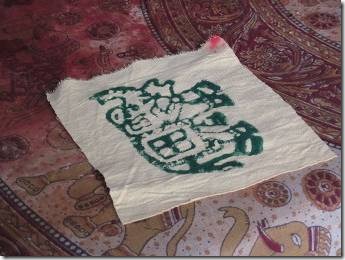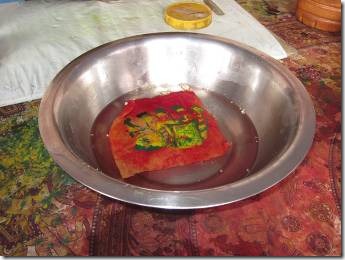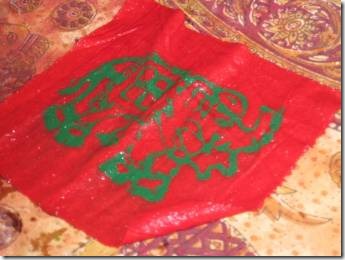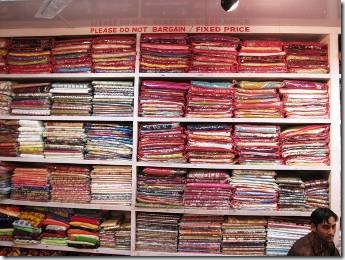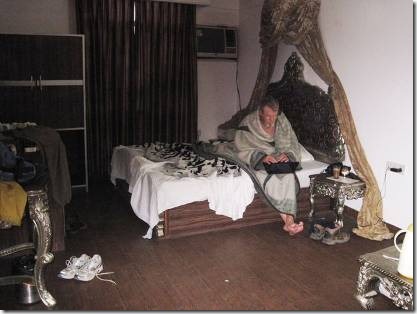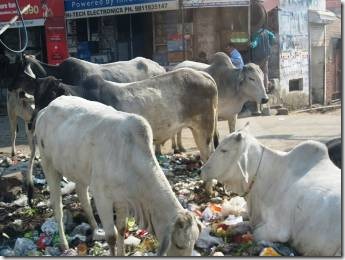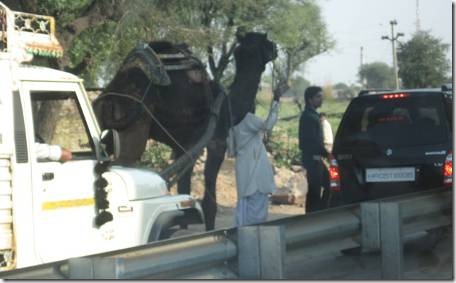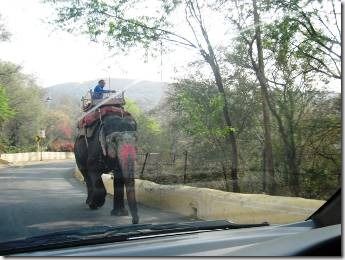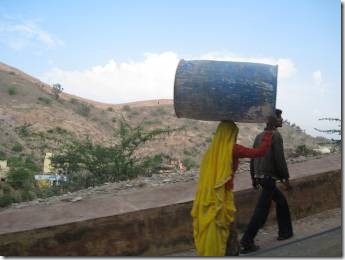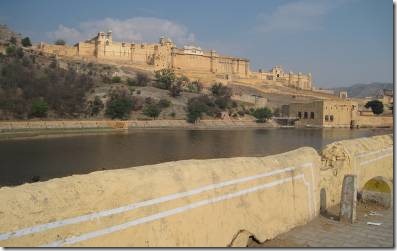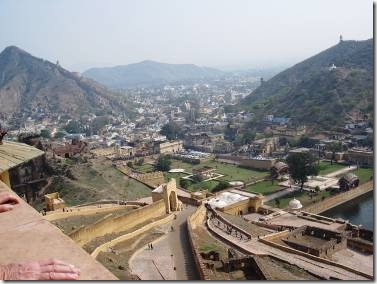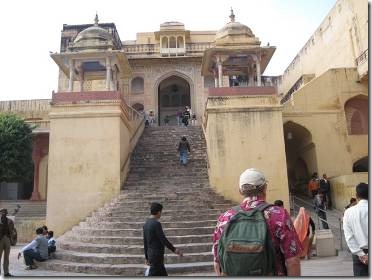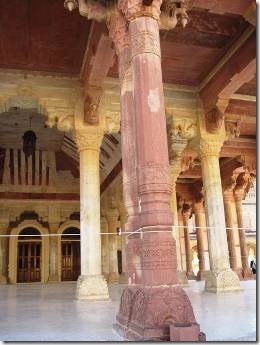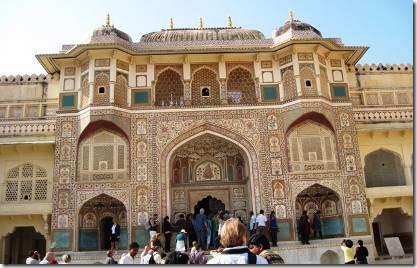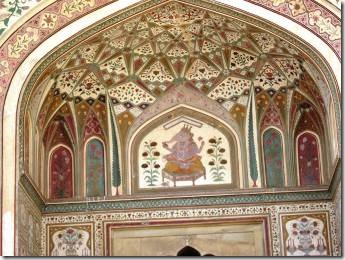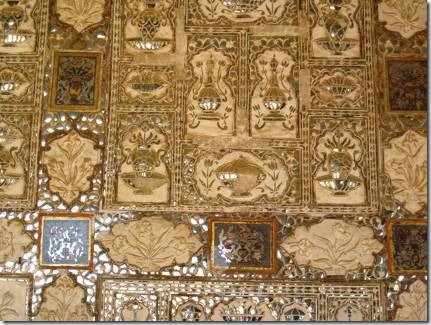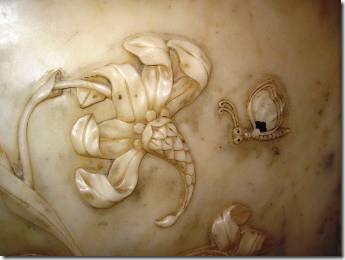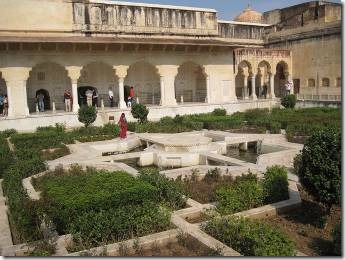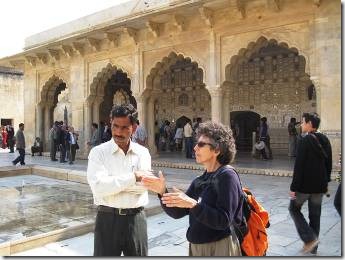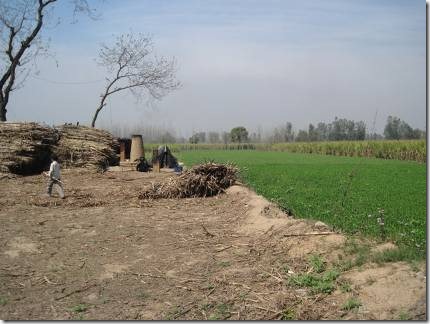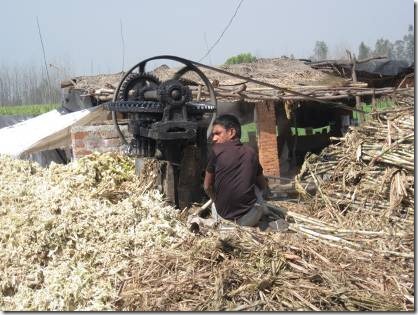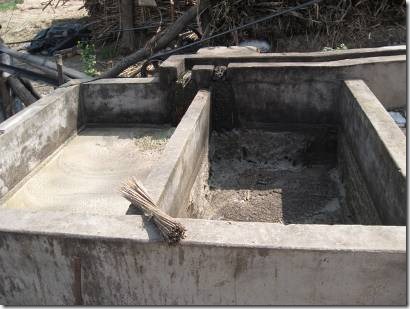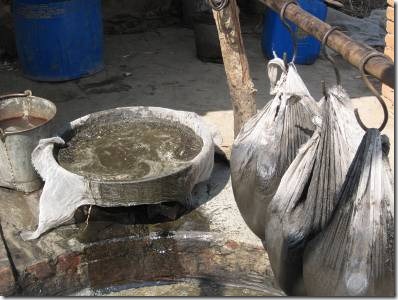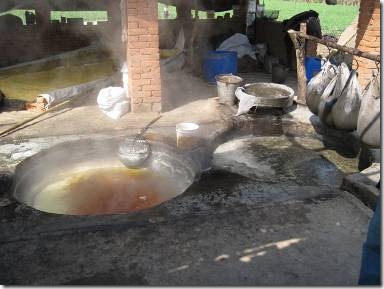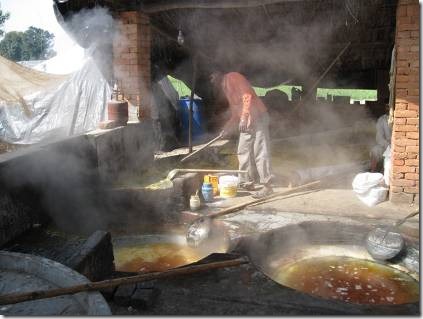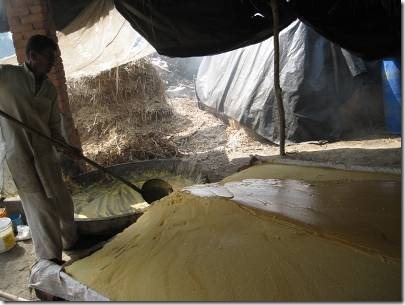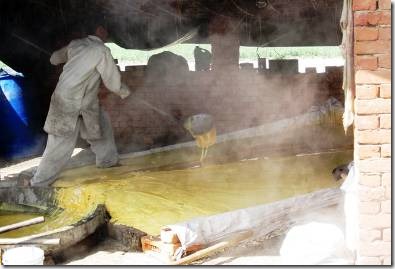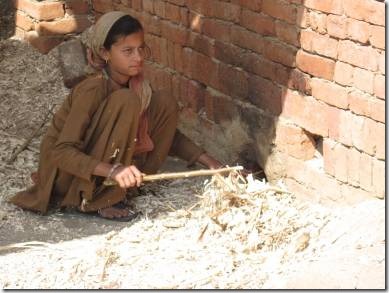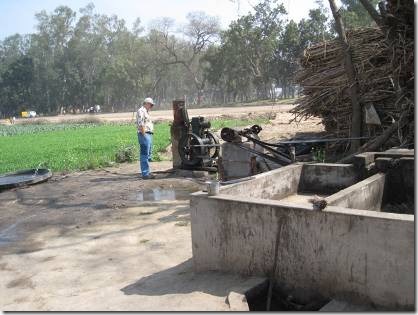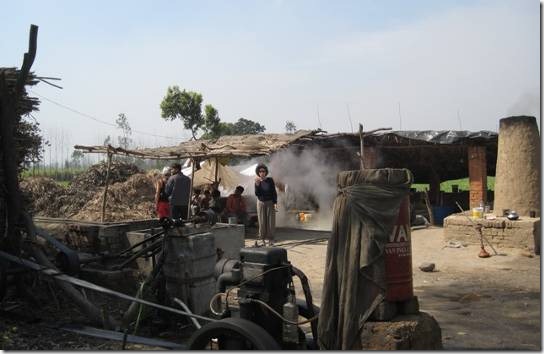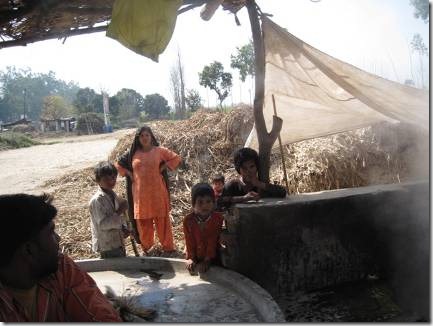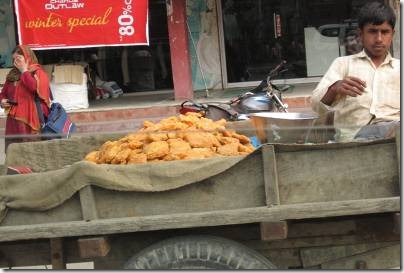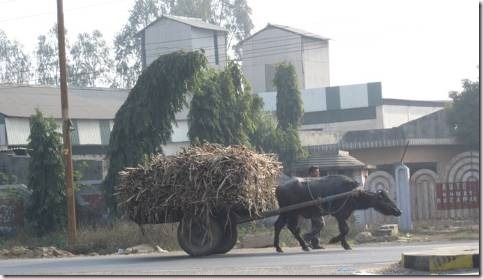From Delhi we drove forever to get to Jaipur in Rajasthan. Jaipur and Pushker were on Linda’s “must see” list. This is the information provided by Nayeem, our tour operator.
“Jaipur, first planned city in India was founded 18 November 1727 by Maharaja Sawai Madhopur. It is also popularly known as the Pink City located in the semi-desert lands of Rajasthan. (Lots of red sandstone walls and structures and pink was for good luck here as orange was in Haridwar.) The city which once had been the capital of the royalty now is the capital of Rajasthan….At present Jaipur is a major business center with all the requisites of a metropolitan city.” We had several places on our list to see though it didn’t quite work out that way. We kept telling Sandeep that we weren’t quite the typical tourists that he may have encountered before. And it was in Rajasthan that we learned India Airtel purchased in Cochin, Kerala doesn’t necessarily work in Jaipur, Rajasthan, though it sort of did in Delhi. And Michael got sick and Randal didn’t really want to camel riding…. But we did see a bit of Jaipur and had a pretty good two days.
We did see the big beautiful Amer Fort.
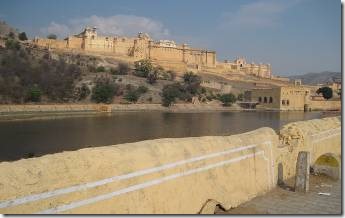
Amer Fort where did had a full mornings tour with our first local guide. More about it in another email.
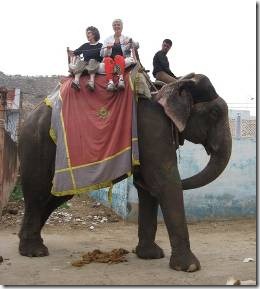
And we did have a short, late afternoon elephant ride around the block. It was supposed to have been a long ride up to the Amer Fort but two Korean tourists had gotten hurt that morning falling off their elephant which had gotten into a fight with another elephant so no ride for us. We should have skipped it altogether but it was part of the package and already paid for. Of course, then we had to tip the mahout (elephant jockey) and pay for some photos a young man had taken and was desperate for us to buy…. It was a very tall elephant and I didn’t trust the seat would really stay on so I was glad to pay and get off.
Day two in Rajasthan was to be a long drive to Pushkar, one of the oldest cities in India located on Lake Pushkar. There, after seeing several temples we could , for about $25, take a late afternoon camel ride in the desert. (It cost $50 to ride a horse around Central Park in New York City several years ago so the camels were sort of a bargain.) After the camel ride it would have been a 6 hour drive back to Jaipur. Michael was still sick so never even started the trip. Randal said right away that he wasn’t going camel riding so I was a bit less enthused about the whole thing. But Linda really wanted to go so I would have gone camel riding with her. As it turned out, about 40 minutes into the long drive to Pushkar, Sandeep suggested that we turn back. He knew the temples weren’t the main attraction for us, but rather the camel ride in the desert. Though very unusual in late February, it had stormed and hailed the night before and the weather that morning was dreary and overcast. Sandeep was afraid that the camel ride would be rained out so then what was the point of going? He suggested we turn back and spend the day in Jaipur. We all agreed though we really weren’t sure what we would do. It was cold and our clothes weren’t keeping us at all warm and my sciatic leg was starting to act up. Our first stop turned out to be an empty mall. Our second stop was a McDonald’s for coffee. Malls and McDonalds….we needed a break from temples and ruins.
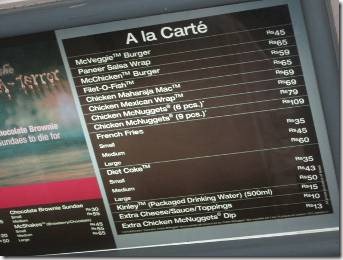
Where’s the beef?
I took this one photo and then the staff told me, No Photos! No beef either. Beef isn’t eaten by Hindus though they do use water buffalo milk to drink and make yogurt. Water buffalo work pulling wagons and plows so oddly there is seems to be a distinction between buffalo and cows. I don’t know if cow milk is used. Sandeep’s family kept water buffalo for milk.
After coffee at McDonalds we looked for Linda’s printer cartridges on a street filled with electronics (no luck) and then had a frustrating visit to an Airtel service center trying to add internet time to our SIM card (no luck since we were in Rajasthan and not Kerala where we had bought the original SIM card.) Then it was time for lunch at the Rainbow Restaurant where we had eaten lunch the day before. Sandeep tried to suggest restaurants where bottled water was used for cooking and where tourists could eat, usually without getting sick. It was relatively cheap, the service was good and the bathroom was clean.
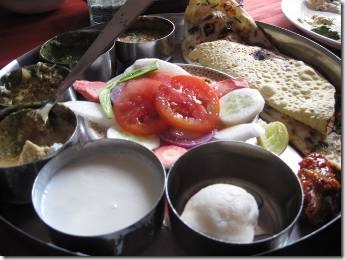
All vegetarian with naan bread, veggies, lentils, yogurt and for desert, the white ball which resembled bread soaked in some type of mild sweet liquid. After all of the hot spices it’s nice to have something sweet. Randal and I shared this and there was food left over. It cost about 240 rupees plus the tax and service charges was about $8 US. Food was cheaper in China and Malaysia. Food was starchy, spicy, sauced, plentiful, and filling and sometimes after a big lunch and a long all day drive we would just have some ice cream at the hotel restaurants for dinner. Ice cream in India is quite good with lots of flavor choices.
After lunch Randal went off for a shave and haircut at the same place Sandeep had gone the day before. Randal paid more but that was the case just about everywhere for everything and not just in India. Sandeep drove Linda and me to the main street bazaar across from the Hawa Mahal. That area is very touristy so we opted for a side street instead of the main road shops. Sandeep asked if we would take a tuk tuk back since it was his turn to have stomach issues and he felt bad. We said of course and off we went.
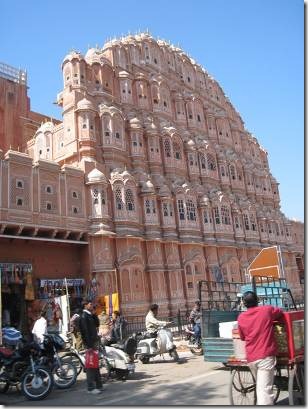
The Hawal Mahal shows why the city is called the Pink City. The pink walls show up around most of the older part of Jaipur. “The Hawa Mahal which adjoins the famous City Palace wall, was built in 1799 by Maharaja Sawai Pratap Singh and has now become one of the landmarks of Jaipur. The palace is shaped like a pyramid and is a five-storied building with a number of small windows and screens with arched roofs. There is intricate carving in the front and much attention has been paid to even minute details. Its purpose was simply to allow the royal women a view of ceremonial processions while seated behind small windows, allowing them to look out without themselves being seen.” (from the back of a post card.) Hawkers across the road tried to entice us to climb up in their building to take photos and hawkers at the Hawal Mahal sold tickets to go inside to take photos. We took a pass on both counts. Nothing is free in India. I guess it’s really that way all over: we paid in Tibet and paid additionally to take photos. Here, at least, photos were included in the price of admission but video was extra.
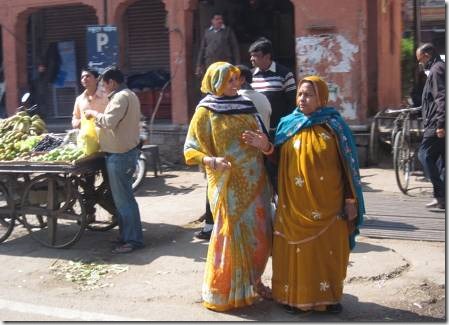
Some women out shopping.
The side street we picked was filled with goods for locals rather than souvenirs and we were pretty much ignored as we walked along. We did stop to buy some postcards and then I bought the small wood block that I mentioned in the Taj email.
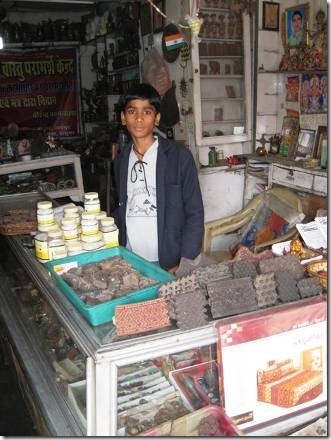
A very trustworthy future certified accountant.
I bought the small bas relief block from this young man. He had some that were marked 350 rupee or 700 rupee. I asked if he had any for 100 rupee. He showed me a box with smaller wood blocks. I picked one out and asked, “how much?” “50 Rupee,” he answered. I had implied that I would pay 100 rupees but since the real price was 50 rupees that’s what he charged me. His English was excellent and he was very polite and helpful. He told us that he is 16, in his 11th year of school and he would be a certified accountant when he finished his last year of school.
Our next stop was the public library just across the road. After crossing, Linda and I were immediately taken in hand by a gentleman who asked what we were looking for. Since accepting help is a prelude to paying a tip, we tried to walk away saying we knew where the library was. We had seen the sign from across the road. But he insisted that we were wrong and we should follow him into a slightly creepy stairwell around the corner from the library sign we had seen. In this instance, his advice did prove helpful. He led us upstairs and into the library and introduced us to the librarian explaining, in Hindustani , that I was a librarian from the US which somehow I had told him in the process of ignoring his help. Then he sort of disappeared and Linda and I were given a tour of the library.
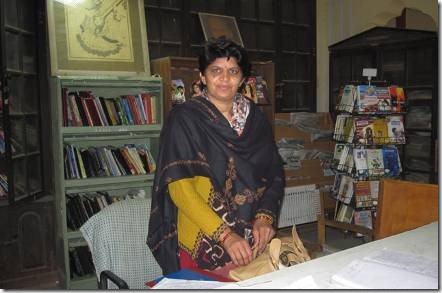
Shellia Sherma, Librarian at the Maharaja Public Library.
The library was started from the personal collection of books the Maharaja donated in 1866. There were several men reading in the room which was nice to see.
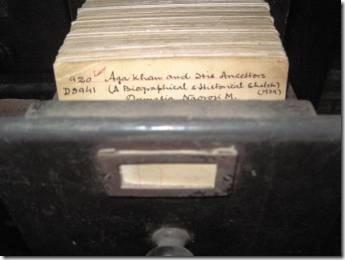
The card catalog still all written by had!
My first library job, after Ellen taught me how, was to create the cards for the children’s books at the Roanoke County Public Library. I had to choose the Dewey number, the subject heading, and the main entry way before key word searching existed. I did hand write cards but then Margaret, Helen, Joyce or Jean typed them up and filed them into the drawers. My job was to check to see if they had been filed in the correct place, which they almost always were, pull out the rod and “drop the cards” where they would remain until the book was withdrawn. The worst thing was pulling out the rod and then dropping the drawer, only once, and then having to re-file all of the cards. Sometimes people would take out more than one drawer and put them back in the wrong place. Sometimes, rather than write down the information, they would rip out the whole card and ask us for help to find the book! I’m going to guess and say the red check on this card was from an inventory.
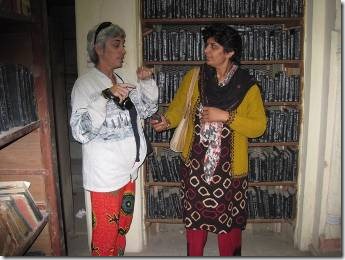
Shellia had asked my salary and Linda was explaining that the cost of living in the US was much higher than in India. It certainly didn’t seem a great fortune to me, though it was good pay with good benefits so I definitely couldn’t complain. Night and weekend hours, not so great. Next we went to Technical Services where the books are processed before being placed on the shelves. There we met Santosh Tanwer and Ranfina Chodary who opened the children’s room for us to see and then sang the Indian National Anthem at Linda’s request.
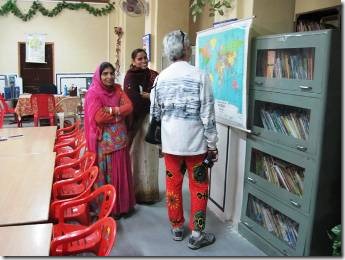
The Children’s Room
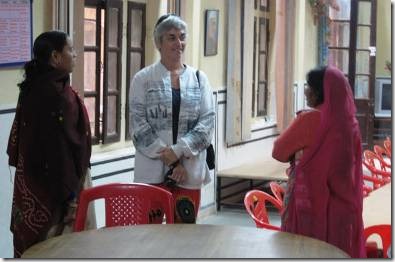
Santosh and Ranfina serenade Linda.
They had very sweet voices. When we said our good-byes it was like leaving friends! It was another instance of feeling frustrated that I couldn’t speak the local language and I certainly appreciated all three ladies being able to communicate with us in English. English is not the first language in India as it was in Singapore. However, small boys wanting to sell postcards or be your guide speak English quite well. Hopefully I have written their names correctly.
We left the library and our “guide” was still waiting. We thanked him but firmly said good-bye and walked away to continue looking at the shops along the road.
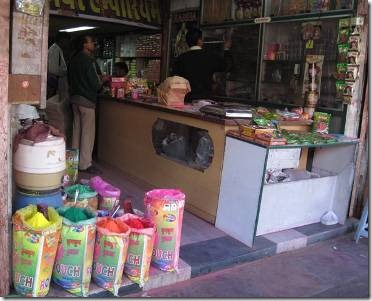
Bags with colored chalk used to decorate the elephants.
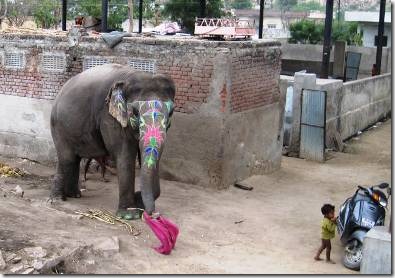
Painted elephant.
Elephants are used in the tourist trade and during wedding celebrations, many of which take place in February. We saw lots of them being ridding down the main road of Jaipur. It is a controversial subject since the elephants aren’t originally from Jaipur and the summer weather is said to be too warm for them as it the hot road pavement. Many of the elephants have been rescued from worse situations and this is one way to save them. This one seemed happy enough and lived around the corner from our elephant ride. I just can’t imagine letting little children play around big elephants!
We stopped at a shawl shop and Linda negotiated for some to take home as gifts. At this point I started to get achy and feel bad so it was time to take a tuk tuk back to the hotel. Sandeep told us it should cost about 30 rupee but when we asked were offered a fare of 100 rupees. We said no. A bicycle rickshaw said the same thing. Finally another came along and said he would do it for 30 rupee. We got in and because it was a long way decided to give him a 20 rupee tip. He would get 50 rupee rather than the agreed upon 30. Problem was he meant 30 rupee per person! We had insisted that it was one price for both of us when speaking with the first two men but perhaps this man didn’t hear. He got his 50 rupees and that was that. I went in, wrapped up and took a nap. Dinner that night was soup and some ice cream and by morning I felt better.
It was really a fun afternoon shopping with the locals rather than at the “tourist emporiums” that are always included in most tour packages.

